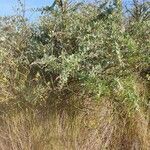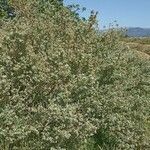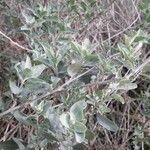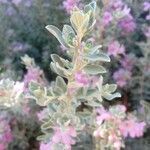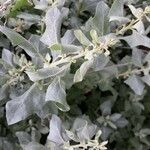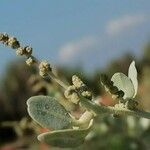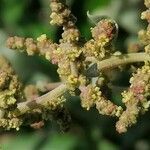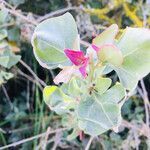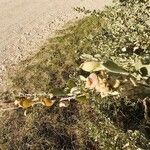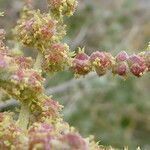Fruiting bracteoles sessile, their basal connate part absent or very short, up to 1.5 mm.; free apical part of each bracteole reniform to broadly deltoid-ovate, as broad as or more commonly broader than long, 2.5–7 mm. long, 3–9 mm. wide, acute to rounded at apex, cordate or sometimes truncate or very broadly cuneate at base, smooth to conspiciously muricate or tuberculate in centre; margins on either side with 1–4 obscure to pronounced teeth.
It is a shrub growing to 2 m high. The leaves are alternate and have leaf stalks. The leaves are silver green. The blade is 3 cm long. It narrows at the base. The flowers are greenish white. They are in irregular spikes.
Leaves ovate to oblong or elliptic in outline, 1–4 cm. long, 0.4–2.5 (3) cm. wide, rounded to acute at apex, cuneate to attenuate at base, entire or sometimes with 1 (2) obscure shallow lobes or teeth.
Shrub or woody herb, procumbent or sprawling (probably always so in the Flora Zambesiaca area) to suberect, 0.5–3 m. high, densely mealy all over so that the whole plant is whitish to pale grey-green.
Inflorescence a terminal panicle with the ultimate branches spiciform and mostly leafless; lower flower clusters in leaf axils.

